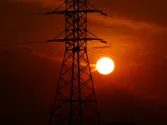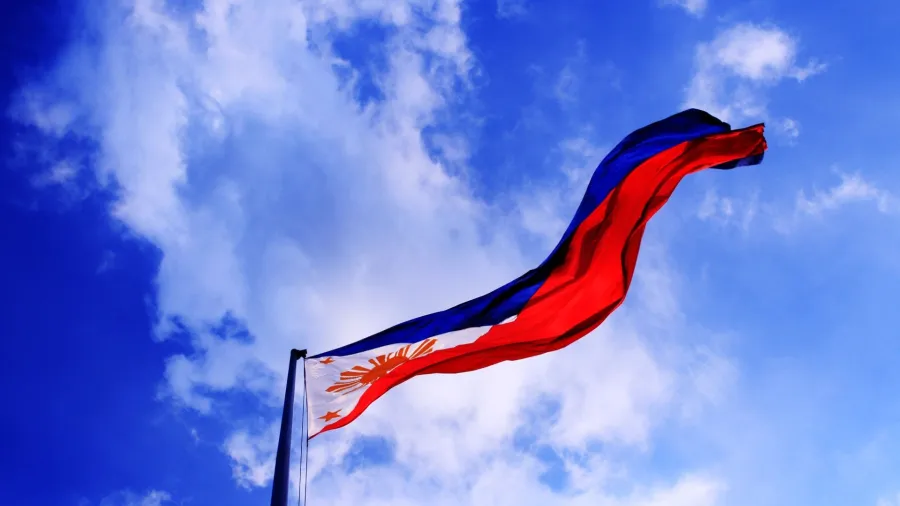
Philippines on track to energy transition, but RE targets could be higher
The country’s renewable energy has accounted for 22% of the energy mix as of 2022.
The Philippines is faring well in achieving its goal to ramp up the share of renewable energy (RE) in its generation mix, but could be “more aggressive” in its targets, according to a climate and clean energy expert.
It must be pointed out that the Philippines is abundant in resources and would do well to drive policies that further encourage investors, particularly from the “vibrant” private sector, said Ramnath Iyer, the research lead on Climate & Renewable Energy Finance for Asia at the Institute for Energy Economics and Financial Analysis (IEEFA).
Iyer said the Philippine government has taken significant steps to drive its goal to reach 35% renewable energy share by 2030 and 50% by 2040 with policies that include active participation in the Green Energy Auction Programme (GEAP).
“The Philippines is on track, for now,” Iyer said. “The Philippines is doing pretty well because the policies are being implemented.”
“There are no restrictions on foreign ownership, which means that the sector is open for investment… These kinds of policies, the fact that investors can own the companies, are very positive for investments,” he added.
In the Bloomberg New Energy Finance (BNEF) Climatescope 2023 report, the Philippines was ranked fourth amongst the most attractive emerging markets for renewable energy due to its auctions, feed-in tariffs, net-metering schemes and tax incentives.
The report also noted that the Philippines has awarded 3.4 gigawatts (GW) of renewable energy capacity out of the 11.6 GW offered in its second green energy auction, of which 1.2 GW are scheduled for 2024 to 2045 for ground-mounted and rooftop solar as well as onshore wind power, whilst 2.2 GW are expected by 2026. The country’s installed renewables capacity currently accounts for 18% of the total.
Due to limited restrictions on foreign ownership, the investment in clean energy saw a significant 41% year-on-year increase to $1.34b (P74.57b), according to BNEF.
However, Iyer said that whilst the Philippines is on track for its targets, the country would still have to accelerate the pace of RE adoption and ensure better performance annually. Considering that the country has abundant resources in offshore wind, solar, geothermal, and hydro, its targets do not seem to be the “most aggressive,” he said.
“Given the entire range and the diversity of renewable resources available for the Philippines, it really can be pushing the envelope further and going for a more aggressive phase-out of fossil fuels and thereby improving their energy security, because a lot of these fossil fuels are imported,” he said.
“So in some ways, the programme is not ambitious enough, and could be more ambitious,” he added.
Marko Lackovic, managing director and partner at Boston Consulting Group (BCG), said the share of renewable energy generation currently stands at 22%, based on data from the Philippines’ Department of Energy.
Despite this, there is still a reason to be “optimistic in the short to medium term” citing the increase in renewable portfolio standard to 2.52% in 2023 across distribution utilities, retail electricity suppliers, and generation companies, as well as the foreign ownership allowed for renewable energy projects.
Vibrant private sector
Unlike its neighbouring countries such as Malaysia, Indonesia, Vietnam, and Thailand where state-owned companies dominate the market, the private sector plays a bigger role in the Philippines.
Iyer said that this is a positive development as the government could not shoulder the projects for the energy transition due to the scale of investments needed.
“Given this constraint, it’s positive that the Philippines has a vibrant private sector. It also has a very vibrant and well-capitalised banking sector, which can help in financing and knows these private sector players pretty well. And they have had good banking relationships,” Iyer said.
“The private sector has a very key role to play in the energy transition. It's already playing it, [and] I think the private sector is doing a good job of playing it,” he added.
One of the leading private players is ACEN, which operates over 600 megawatts (MW) of wind and solar generation capacity in the Philippines and has operations in Australia, India, Laos and Vietnam.
A major step that it took was the exit from its largest coal-fired plant with a total capacity of 246 megawatts (MW) run by South Luzon Thermal Energy Corporation through a privately financed transition mechanism, according to an IEEFA report.
Iyer also noted the Citicore Renewable Energy Corporation which is a leading player in the local solar energy space with 163 ME and over 300 MW of renewable energy in various development stages. It is also the first company to raise a real estate investment trust based on its solar power asset.
Energy Development Corporation, meanwhile, is the leader in domestic geothermal energy with a 1,188 MW capacity. It is a subsidiary of First Gen, the third-largest independent power producer in the country, which owns 30 power plants, none of which are coal-based, with a total capacity of 2,721 megawatts.
Aboitiz Power, meanwhile, is the second-largest producer in the country with 3,495 MW in coal, oil, geothermal, and hydropower. Whilst coal accounts for 60% of its mix, the country plans to achieve a 50:50 clean energy and thermal power by 2030.
Solar Philippines, which started in 2013, operates 183 MW of solar generating capacity and won large bids on the first round of the auction programme.
“A lot of these companies are relatively young. It also shows there is a thriving private sector in the Philippines, which can take advantage of these if the government sets the right incentives and makes the playing field level for all the players,” Iyer said.
Barriers
The cost of financing for RE projects remains a challenge for developers as this is affected by the increase in interest rates globally. For example, a project which typically takes two years starts with a 5% increase in borrowing cost. By the time it is completed, the project already costs 10% higher, Iyer said.
For wind projects, which usually take five years to finish, a 5% interest rate raises the project costs by around 25% to 30%, making the project uncompetitive.
“At the end of the day, the global interest rate environment has gone up. We need new financing mechanisms to be able to finance some of these things,” Iyer said.
He also raised concerns about the permit requirements at both the macro and micro level as the unclear processes lead to delays. Such problems are found in four specific areas such as defining the allowable areas for development, environmental studies, soil studies, and social studies of people who might be affected by the development.
One initiative the government can implement is conducting a study demarcating areas through zones to identify locations for potential projects. They can put this on a website where investors and developers can easily pick their target areas.
“There needs to be a way to be able to expedite this process, moving from conceptualising an idea, or winning an auction to generating the power connecting it to the grid so that you and I can receive it in our homes,” Iyer told Asian Power magazine.
Investments in grids should also be ramped up as more renewable energy projects are starting to come online by 2025 through 2026.
The Philippines should also focus on energy storage as this can support the intermittency of renewable energy sources and would propel the country to becoming energy independent.
“We need to have storage, either standalone or as a part of utility and we need to see it more incentivised because right now, storage is still expensive. The price of the cost of storage is coming down, but it is still fairly high,” Iyer said, adding that similar policies to drive RE projects should be implemented for storage.
Road towards energy security
To sustain energy security whilst transitioning to cleaner RE sources, Iyer said the Philippines should accelerate further the deployment of renewables and storage.
The Philippines should not “shoot itself in the foot” by deploying new fossil fuel and liquefied natural gas-based projects as it would just be a waste of investment.
“Either it’s going to be the shareholders of the companies or the government and the Philippine taxpayer who end up bearing the burden because the companies at some point can just walk away and say that it’s not profitable anymore,” Iyer said.
BCG’s Lackovic said the Philippines must increase the natural gas power plants’ capacity, whilst ensuring a well-planned exit from coal for the long-term as this will entail forward visibility to investors, and coordination of investments to ensure that the capacity will be replaced by other sources as the coal plants go offline.
He added that further incentives for energy efficiency should be prioritised such as the Energy Efficiency Act, citing the government’s target to reduce energy consumption by 10%.
Alongside these, the government should also continuously improve and harmonise the permitting process for renewable energy projects, Lackovic said.
Han Phoumin, senior energy economist at the Economic Research Institute for ASEAN and East Asia, said that with coal’s dominance in the power sector, the Philippines would need to invest more in carbon capture and storage.
The country should also implement clear policy support and incentives for renewable energy projects such as tax breaks, lowering the capital expenditure for renewables, and increasing income revenue through a premium or feed-in-tariff.
All markets in Southeast Asia should also introduce carbon markets that will support clean energy technologies.
“Without a carbon market, owners of plants and investors may not invest in clean technologies. By having the right carbon price, it forces the market to invest in clean technology and shift away from dirty fuels,” Phoumin said.

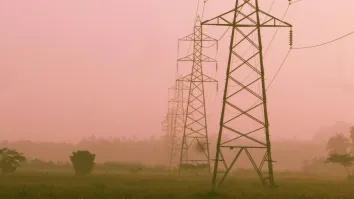
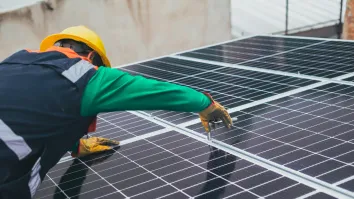
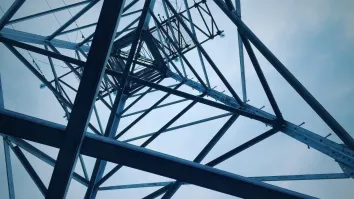













 Advertise
Advertise
